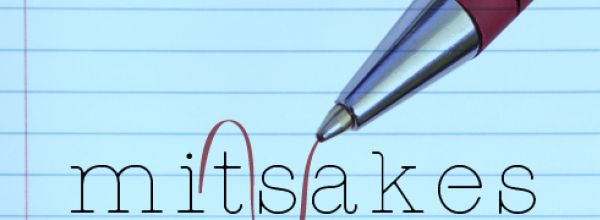Common Mass Spectrometry Contaminants: I Messed It Up So You Don’t Have To!

Recently I decided that it was time to stop hunting-and-pecking for co-immunoprecipitation results with western blots, and time to start looking at the bigger picture using mass spectrometry.
As a molecular biologist trained in immunology, I had no background or experience with mass spectrometry or proteomics, but I did have a willing and patient collaborator. Through many trials, and lots of error, I learned that there are many considerations for mass spectrometry that might not be obvious to you as a molecular biologist. Common contaminants, even in small quantities, can mask important peaks in your mass spec data and have a huge impact on the final results.
Here are some of the mistakes I made, so hopefully you can avoid them.
Using Detergent
It turns out, most detergents do not play well with mass spec machines. Many common lab detergents used for cell lysis (including NP-40, Tween and Triton) will carry through the sample preparation process and severely interfere with your results.
- While some detergents can be removed with additional processing steps, do not use Tween or Triton under any circumstances.
- Check whether your lysis conditions contain any detergents that aren’t compatible. If they aren’t, consider switching to compatible detergents like SDS or an acid-labile surfactant.
- If you change your lysis buffer for an IP, check that the IP still works with your new solutions!
- Detergents can also linger in your glassware. For mass spec, do not wash any glassware with soap. If you aren’t sure, rinse your glassware with hot water and then an organic solvent like isopropyl alcohol.
Not Paying Attention to Plastics
Disposable plastics are ubiquitous in molecular biology, but not all plastics are the same. Different brands use different stabilizers that can leak into samples and overwhelm your mass spec signal. This is exacerbated by the use of many solvents and acids in the sample preparation that can cause leaching of the plastic into your samples.
- Check if your tubes/tips have been tested for mass spec. Many mass spec labs trust Eppendorf brand, which has been tested to prevent plastic leaching.
- Use glass scintillation vials or glass pipettes when you work with high acid or solvent concentrations.
- To prevent leaching, all solvent and acid stocks should never be stored in plastic, Eppendorf or otherwise. Glass (without detergent, remember our lesson earlier!) is best.
Keratin Contamination
Keratin is the most frustrating contaminant in many mass spec labs for one reason: it’s everywhere! It is on our hands, on our head, and even on our lab shelves in the form of dust. Especially when you are looking at rare protein populations, having an abundance of keratin in your sample can mask the signals you’re looking for.
- To prevent your own keratin from contaminating samples, always wear a lab coat and clean nitrile gloves. Make sure you pull back your hair or wear a hairnet.
- To avoid environmental keratin (dust), make sure you wipe down your workspace thoroughly before you start working—it helps to spray the air above your bench with 70% Ethanol as well to get rid of particulates.
- Be wary of places keratin can hide—clean common tools like spatulas and gel rigs thoroughly with 70% ethanol or Windex.
- If you can, get your own small stocks of chemicals and reagents just for mass spec work and keep them impeccably clean. If that isn’t an option, consider sterile filtering any solutions made with common reagents.
Once I learned these lessons, I was able to get quality mass spec data that advanced my research. What questions do you have about transitioning into mass spec?